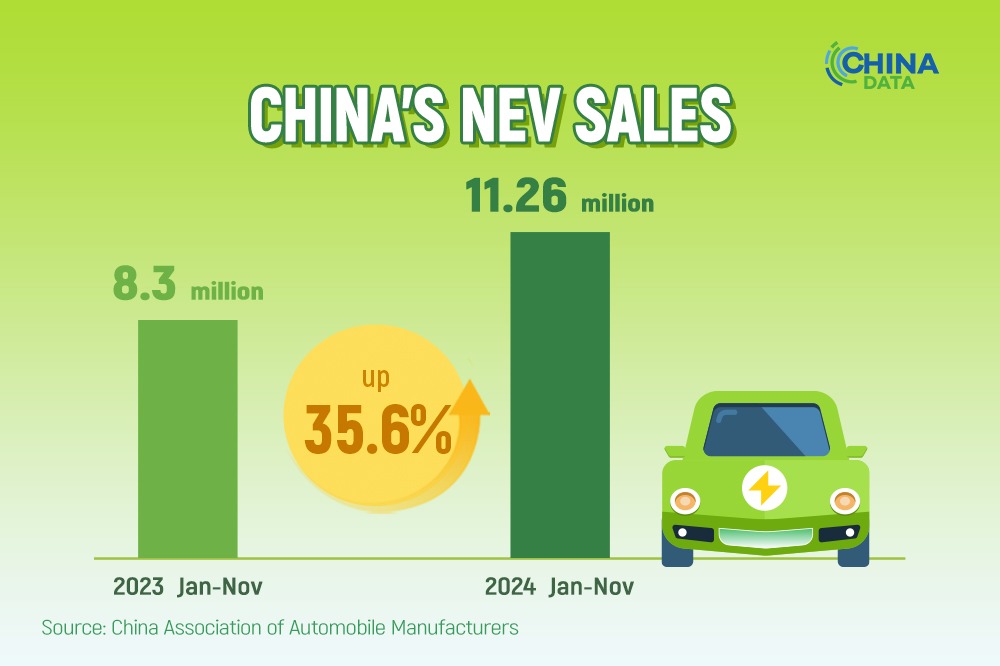Biotech revolution facilitates 'smart agriculture'


The increase in agricultural productivity over the past century has enabled a five-fold increase in the human population and about a 50 percent increase in food per person.
Knowledge, machinery and chemicals significantly replace land and labor in agricultural production. These achievements have also led to increased greenhouse gas emissions, groundwater depletion and biodiversity loss. China exemplifies both the achievements and challenges of this transition. It has performed outstandingly on the agricultural front, feeding 22 percent of the world's population with 9 percent of the world's arable land and an uneven distribution of water resources.
Between 1990 and 2009, China's agricultural labor decreased by 5 percent while agricultural productivity increased by 6.5 percent a year. However, agriculture accounts for 17 percent of China's greenhouse gas emissions and about 8 percent of the degradation of agricultural soil. China and the rest of humankind face the challenge of increasing agricultural production by 70 percent by 2050 while simultaneously reducing or eliminating the side effects of agriculture to make it sustainable.
We suggest that agriculture develop "smart" strategies to increase agricultural productivity while reducing resource load and eliminating environmental side effects. These strategies will take advantage of the capabilities of modern science and the development of enlightened policies and institutions.
"Smart agriculture" should take advantage of modern scientific discoveries. First is the biotechnology revolution, starting with the discovery of DNA, which led to a better understanding of how genetics affects the performance of animals and plants. Biotechnology has become essential to modern medicine. The COVID-19 vaccine was developed using biotechnology tools.
Yet the adoption of agricultural biotechnology has been limited by regulation. All major national academies of sciences say that genetically modified crops are as safe as traditional crops. Still, regulations have limited the adoption of genetic engineering, mainly in producing fiber and animal feed. About three-fourths of the world's cotton and soybean and one-third of the corn are produced by genetically modified organisms. The adoption of GMOs has substantially increased the yield of these crops, reduced the use of toxic pesticides and increased the income of farmers.
The biotechnology revolution is only in its infancy. New biotechnology capabilities, such as gene editing, allow faster development of new varieties of crops in response to diseases and climate change. Modern biotechnology has immense potential to improve veterinary medicine and prevent billions of dollars in economic losses from animal diseases. The Beijing Institute of Genomics provides China with an excellent foundation for genetic engineering research and development. Hopefully, it will be used more intensively.
The "Information Revolution" is another contributor to "smart agriculture". Precision farming can monitor crop conditions and apply input wherever and in the specific amount needed. This increases yield, saves input use, and reduces the adverse side effects of overusing chemicals and water.
Precision agriculture, too, is under-adopted in China. Still, adoption rates can be improved by developing low-cost precision methods for small-scale farmers and providing financial incentives and technical support for adoption. Smart agricultural systems also include drip irrigation, which has increased crop yield by about 40 percent while reducing water and chemical use by up to 50 percent. And low- and no-tillage practices and cover cropping can lead to less carbon loss and greater productivity in the long run.
Scientific discoveries enable us to develop circular technologies to reuse agricultural residues as a source of value. The black soldier fly is an example of an insect that converts agricultural waste into proteins that can be used to feed livestock and support aquaculture. Its potential is apparent from its use in China. Crop and forest residues can be converted into biochar to enhance farm productivity and store carbon. In this regard, significant agricultural productivity differences exist among regions in China and the rest of the world.
Thus, the transfer of knowledge among regions and the adoption of "smart agriculture" have an immense potential to increase the productivity and sustainability of agriculture.
Policies can enhance the development of "smart agriculture". First is continued investment in life sciences and agricultural research and development and extension efforts to transfer the knowledge to practitioners. The rate of monetary return for agricultural research is much higher than market rates. And since climate change is a global challenge, it is crucial to drastically expand agricultural R&D in developing countries, enhancing their capacity to adapt and mitigate.
Second is regulatory reform, which introduces science-based regulation of technologies and activities, balancing benefits and risks. Extreme precaution leading to inaction is risky. But risk is part of life; we cannot avoid it but can control and mitigate it.
Third is the introduction of pricing that considers the cost of environmental side effects from economic activities, thus providing the incentive for introducing clean technologies.
Finally, it is essential to maintain a global exchange of knowledge and global trade in agricultural markets. We are stronger when cooperating against common challenges than when each country operates alone.
The author is a Wolf Prize Laureate, a member of US National Academy of Sciences, and a professor in the Department of Agricultural and Resource Economics at the University of California. The views don't necessarily reflect those of China Daily.
If you have a specific expertise, or would like to share your thought about our stories, then send us your writings at opinion@chinadaily.com.cn, and comment@chinadaily.com.cn.


































